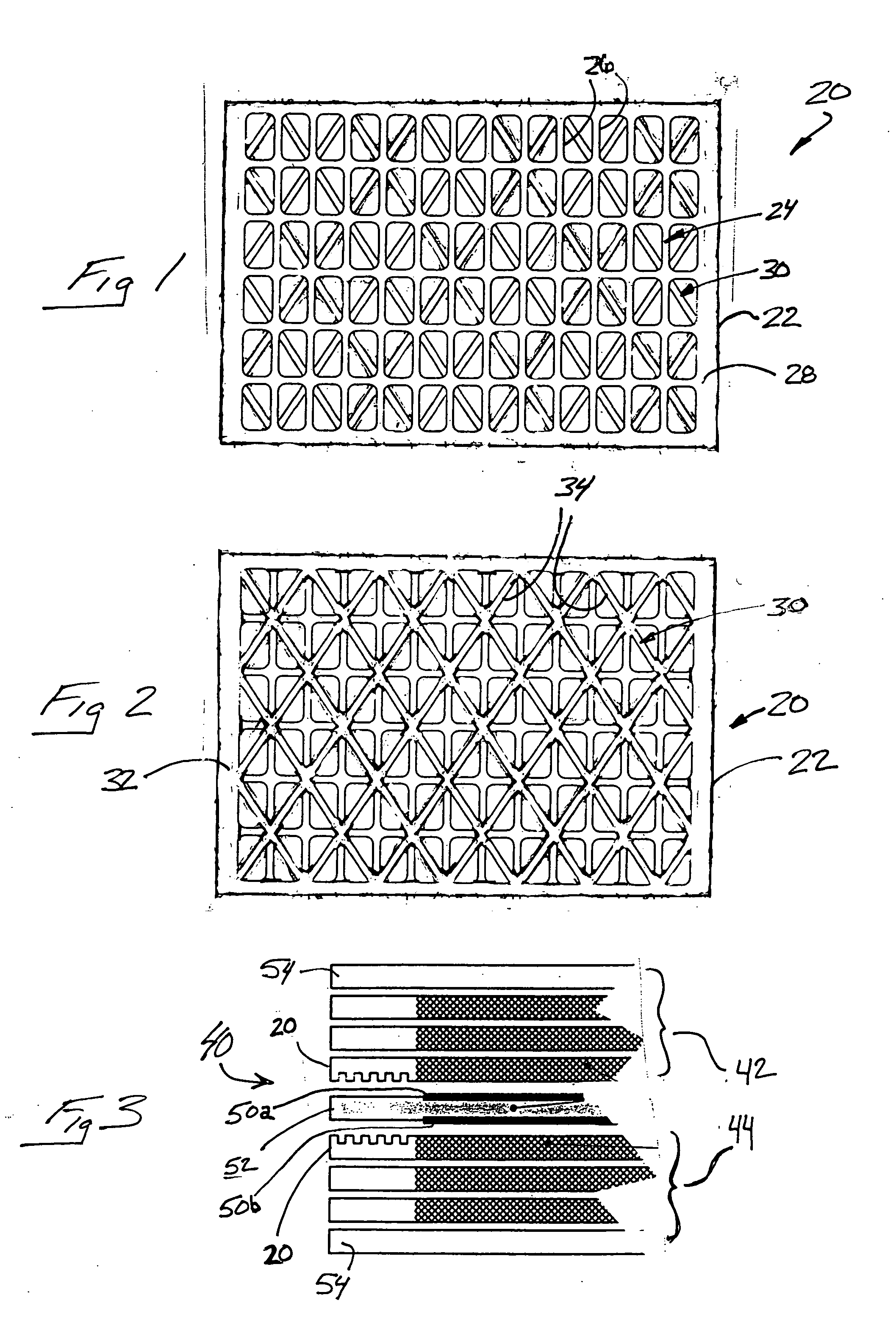Electrolyte support member for high differential pressure electrochemical cell
- Summary
- Abstract
- Description
- Claims
- Application Information
AI Technical Summary
Benefits of technology
Problems solved by technology
Method used
Image
Examples
Embodiment Construction
[0019]FIG. 1 schematically shows a membrane support member 20. A single piece of material 22 has a first lattice pattern 24 with a plurality of recesses 26 on a first side 28 of the material.
[0020] As best seen in FIG. 2, a second lattice pattern 30 on a second side 32 of the single piece of material includes a plurality of recesses 34. As can be appreciated from FIGS. 1 and 2, the lattice patterns 24 and 30 are asymmetric relative to each other. In this example, the lattice pattern 24 includes a plurality of generally rectangular recesses 26. The lattice pattern 30 in this example includes a plurality of generally diamond-shaped recesses 34.
[0021] Although specific lattice patterns are shown, a variety of patterns may be used to meet the needs of a particular situation. Those skilled in the art who have the benefit of this description will be able to select appropriate geometries of the recesses and lattice patterns to meet the needs of their particular situation.
[0022] Although...
PUM
| Property | Measurement | Unit |
|---|---|---|
| Lattice constant | aaaaa | aaaaa |
| Thickness | aaaaa | aaaaa |
| Flow rate | aaaaa | aaaaa |
Abstract
Description
Claims
Application Information
 Login to View More
Login to View More - R&D
- Intellectual Property
- Life Sciences
- Materials
- Tech Scout
- Unparalleled Data Quality
- Higher Quality Content
- 60% Fewer Hallucinations
Browse by: Latest US Patents, China's latest patents, Technical Efficacy Thesaurus, Application Domain, Technology Topic, Popular Technical Reports.
© 2025 PatSnap. All rights reserved.Legal|Privacy policy|Modern Slavery Act Transparency Statement|Sitemap|About US| Contact US: help@patsnap.com

